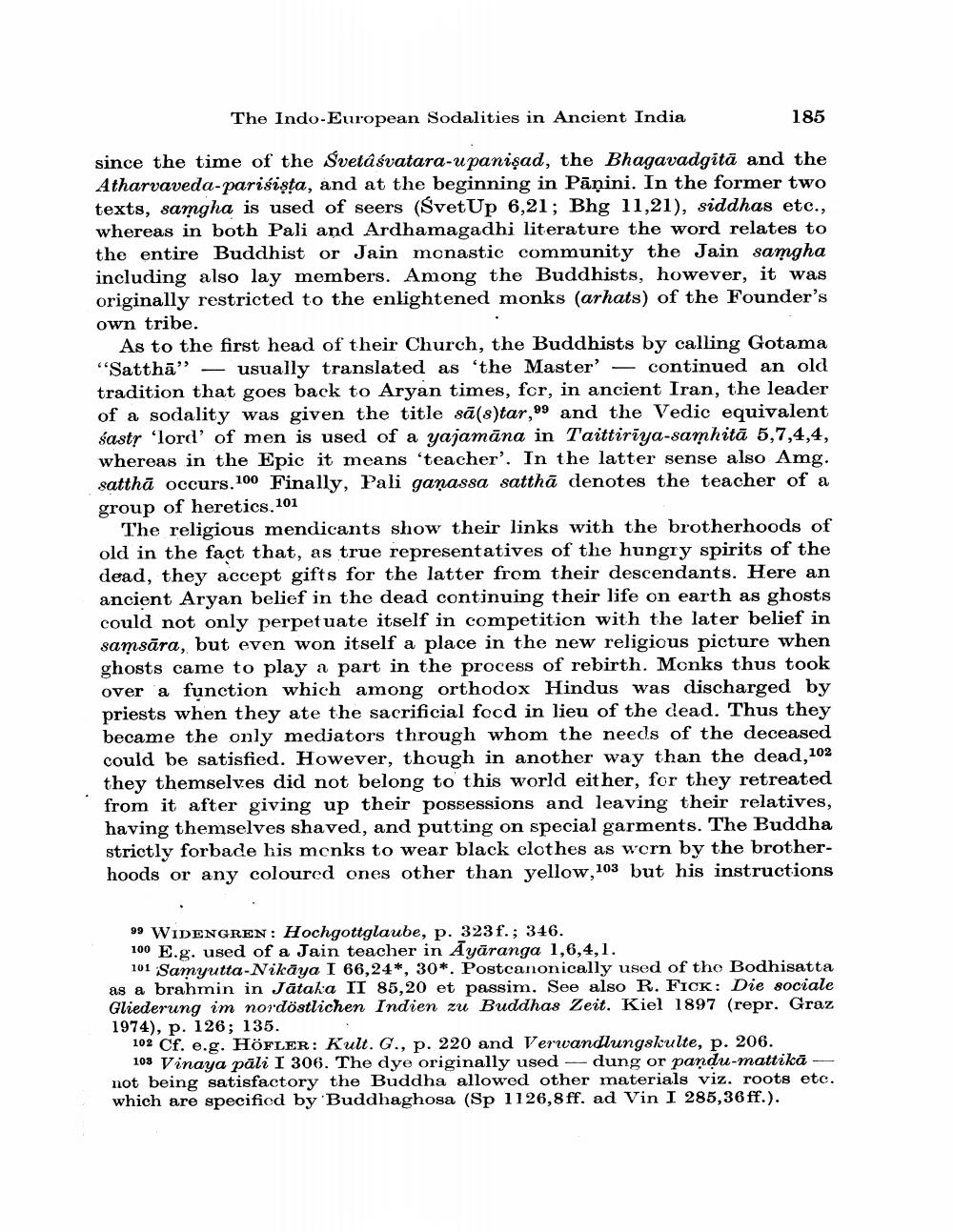________________
The Indo-European Sodalities in Ancient India
185
since the time of the Svetāśvatara-upanişad, the Bhagavadgitā and the Atharvaveda-parisista, and at the beginning in Pāṇini. In the former two texts, samgha is used of seers (SvetUp 6,21; Bhg 11,21), siddhas etc., whereas in both Pali and Ardhamagadhi literature the word relates to the entire Buddhist or Jain monastic community the Jain samgha including also lay members. Among the Buddhists, however, it was originally restricted to the enlightened monks (arhats) of the Founder's own tribe.
As to the first head of their Church, the Buddhists by calling Gotama “Satthā" - usually translated as the Master' - continued an old tradition that goes back to Aryan times, fcr, in ancient Iran, the leader of a sodality was given the title sā(s)tar,99 and the Vedic equivalent sastr 'lord' of men is used of a yajamāna in Taittirīya-samhitā 5,7,4,4, whereas in the Epic it means 'teacher'. In the latter sense also Amg. satthā occurs.100 Finally, Pali ganassa satthā denotes the teacher of a group of heretics. 101
The religious mendicants show their links with the brotherhoods of old in the fact that, as true representatives of the hungry spirits of the dead, they accept gifts for the latter from their descendants. Here an ancient Aryan belief in the dead continuing their life on earth as ghosts could not only perpetuate itself in competition with the later belief in samsāra, but even won itself a place in the new religious picture when ghosts came to play a part in the process of rebirth. Monks thus took over a function which among orthodox Hindus was discharged by priests when they ate the sacrificial focd in lieu of the dead. Thus they became the only mediators through whom the needs of the deceased could be satisfied. However, though in another way than the dead, 102 they themselves did not belong to this world either, for they retreated from it after giving up their possessions and leaving their relatives, having themselves shaved, and putting on special garments. The Buddha strictly forbade his monks to wear black clothes as worn by the brotherhoods or any coloured ones other than yellow, 103 but his instructions
99 WIDENGREN: Hochgottglaube, p. 323f.; 346. 100 E.g. used of a Jain teacher in Ayāranga 1,6,4,1.
101 Samyutta-Nikāya I 66,24*, 30*. Postcanonically used of the Bodhisatta as a brahmin in Jataka II 85,20 et passim. See also R. FICK: Die sociale Gliederung im nordöstlichen Indien zu Buddhas Zeit. Kiel 1897 (repr. Graz 1974), p. 126; 135.
102 Cf. e.g. HÖFLER: Kult. G., p. 220 and Verwandlungskulte, p. 206.
108 Vinaya pāli I 306. The dye originally used dung or pandu-mattikā -- not being satisfactory the Buddha allowed other materials viz. roots etc. which are specified by Buddhaghosa (Sp 1126,8 ff. ad Vin I 285,36 ff.).




